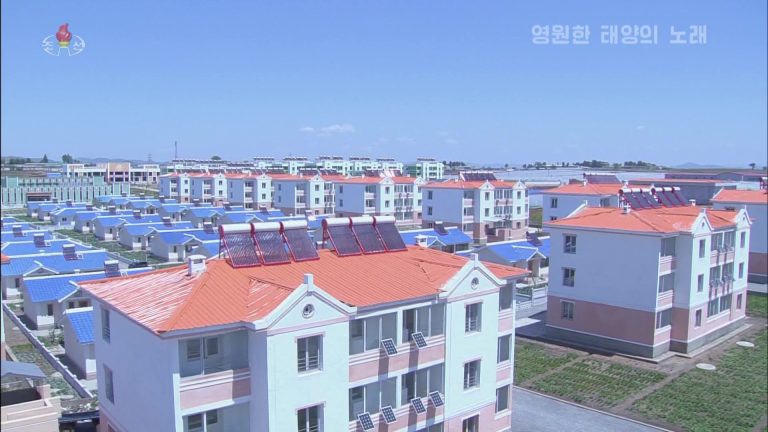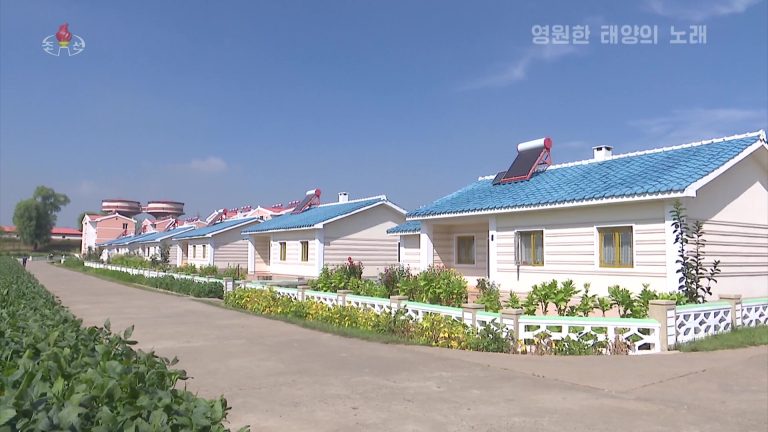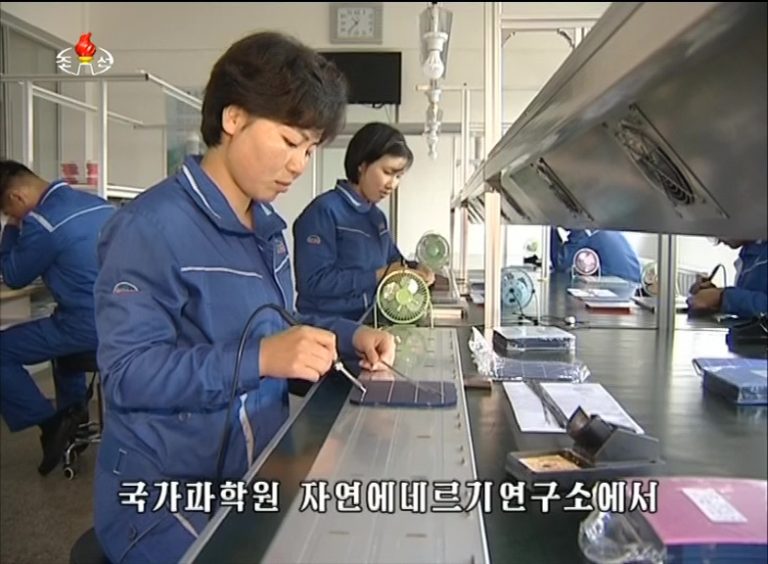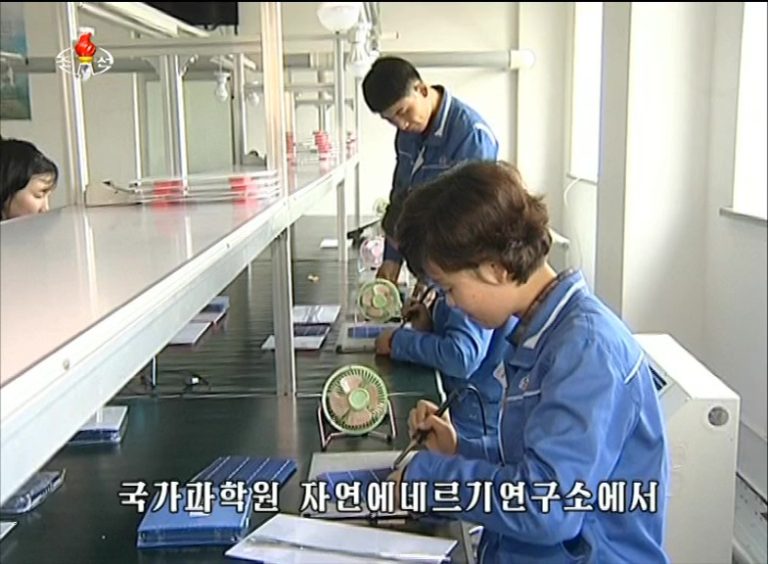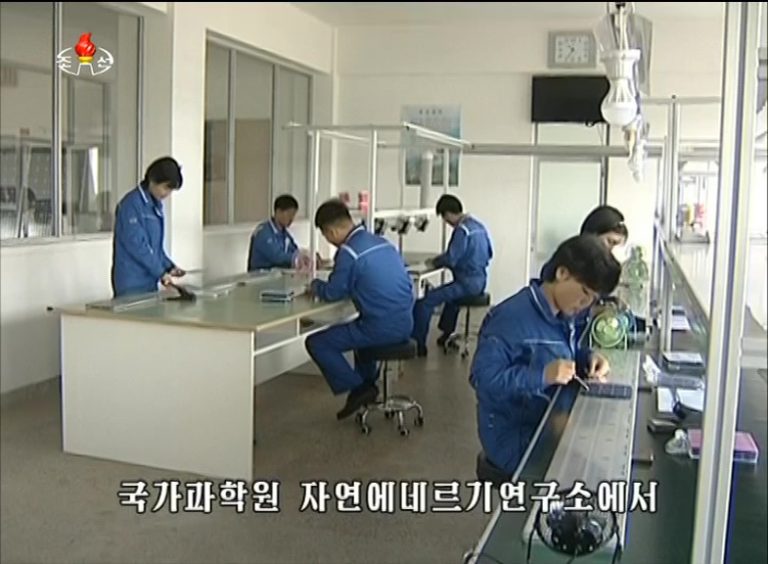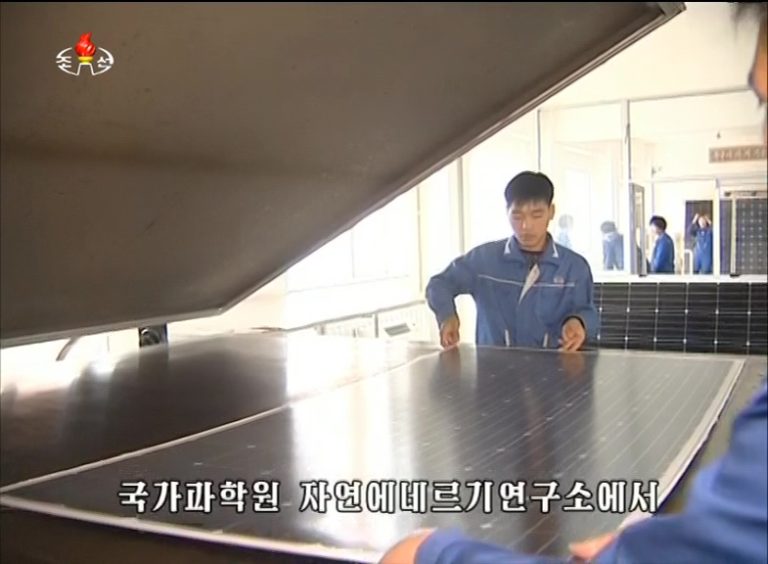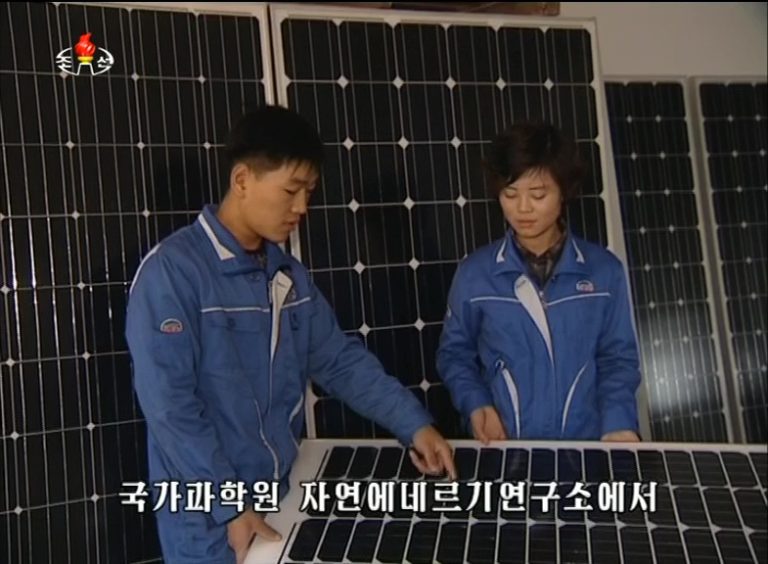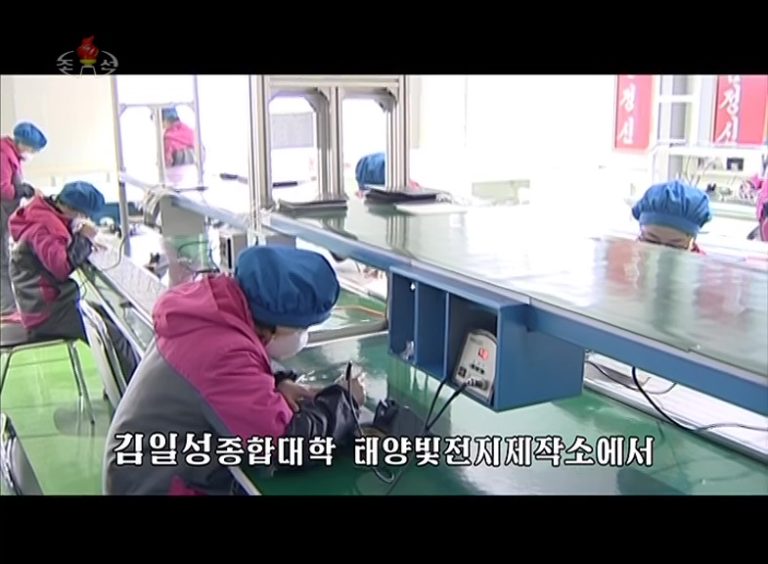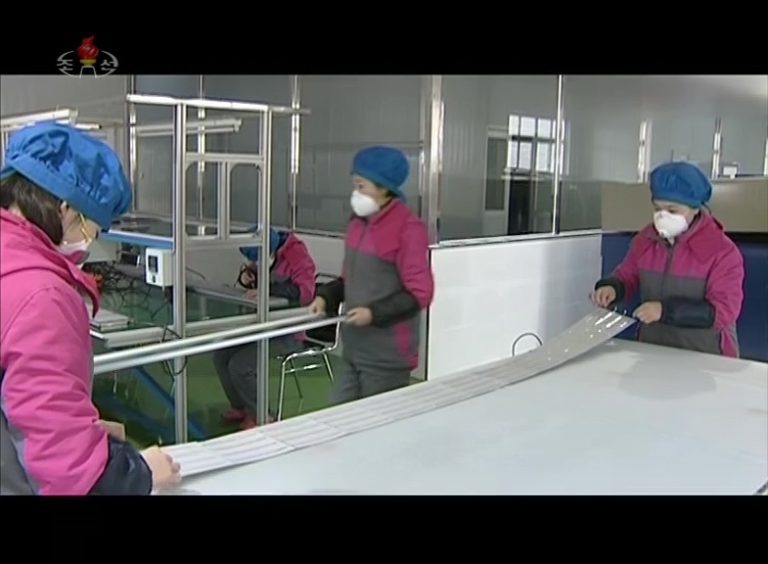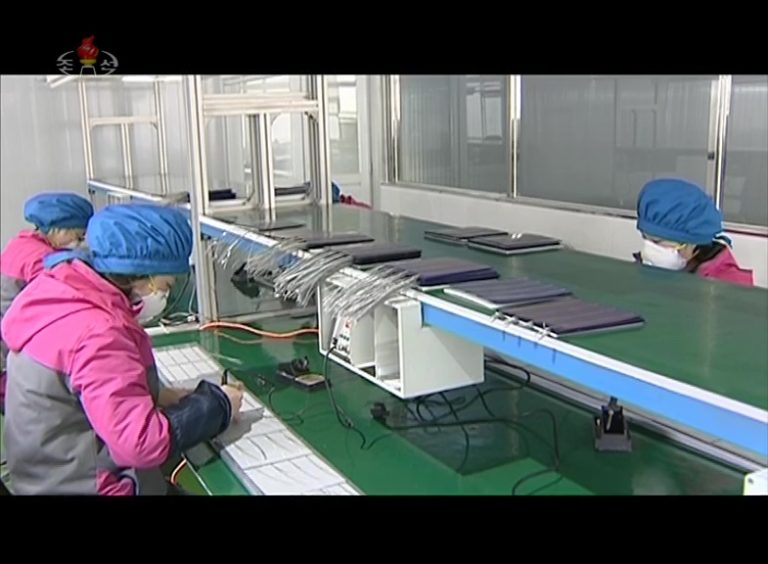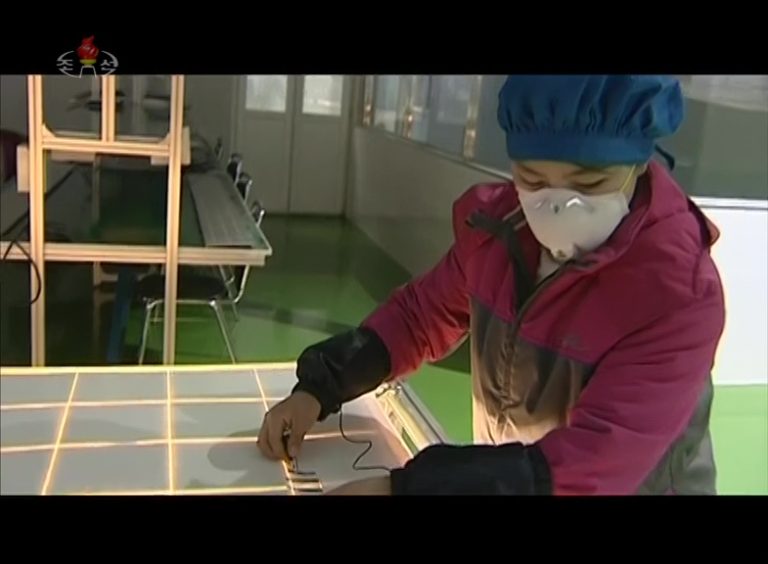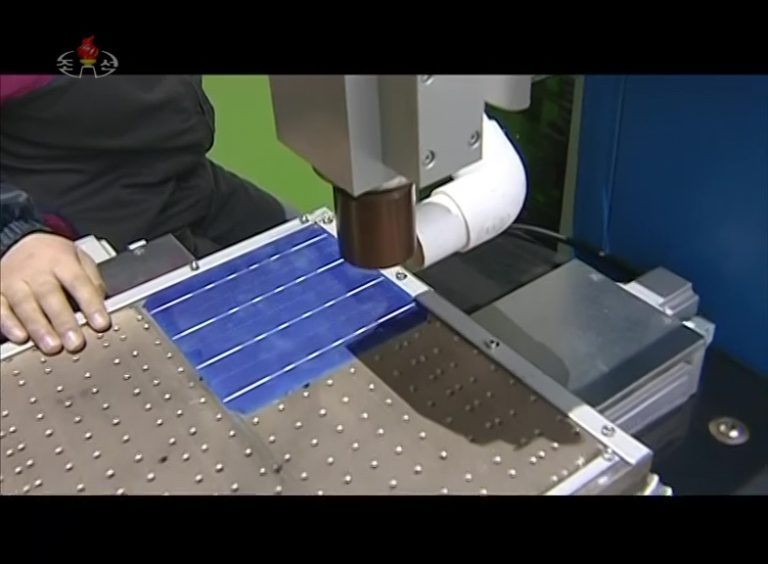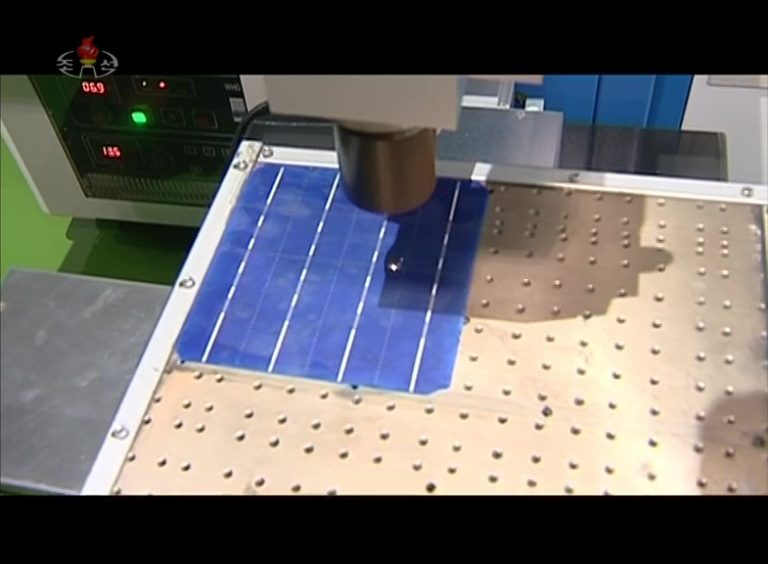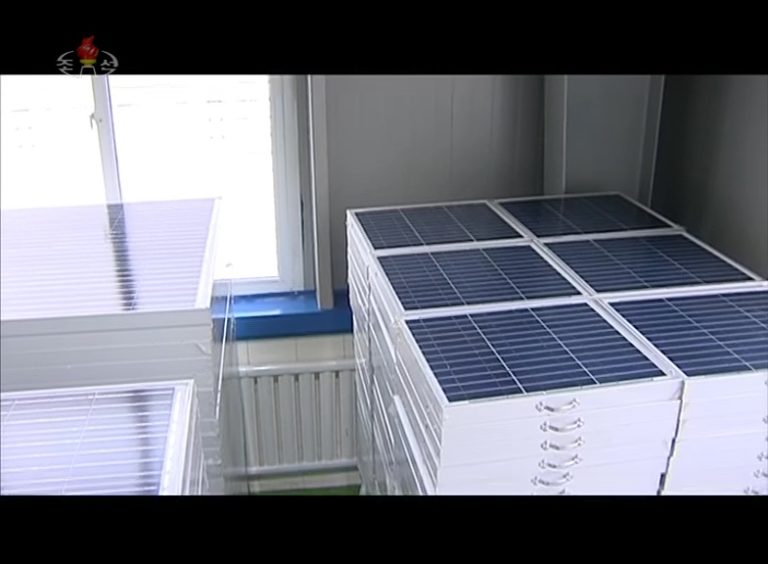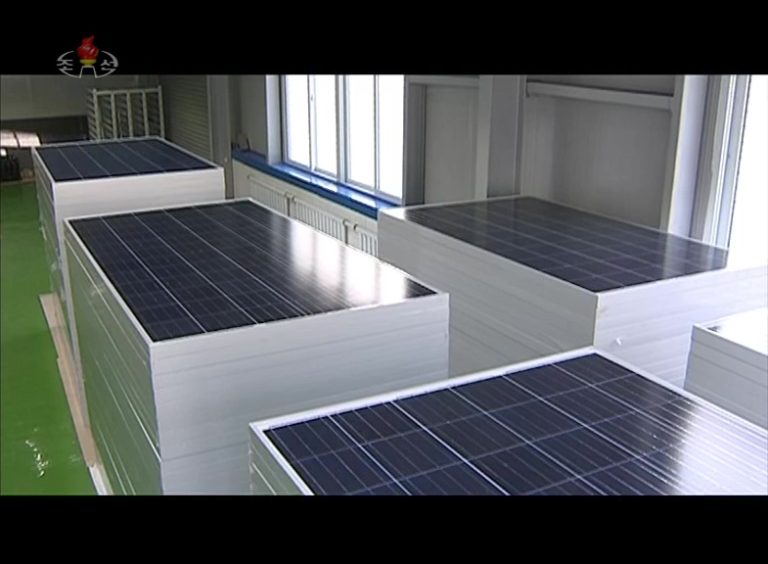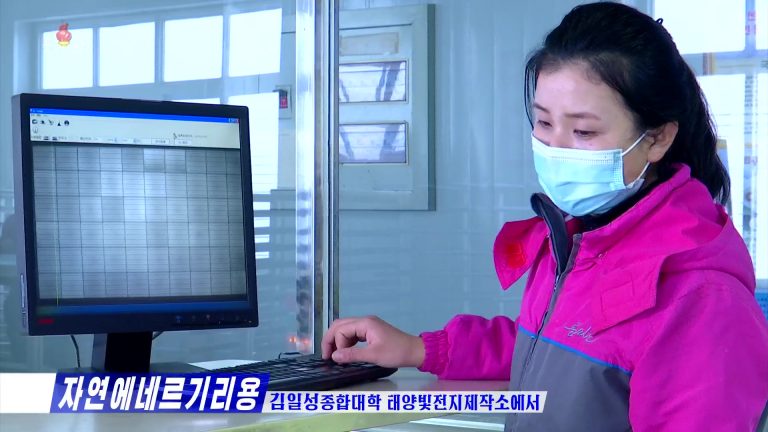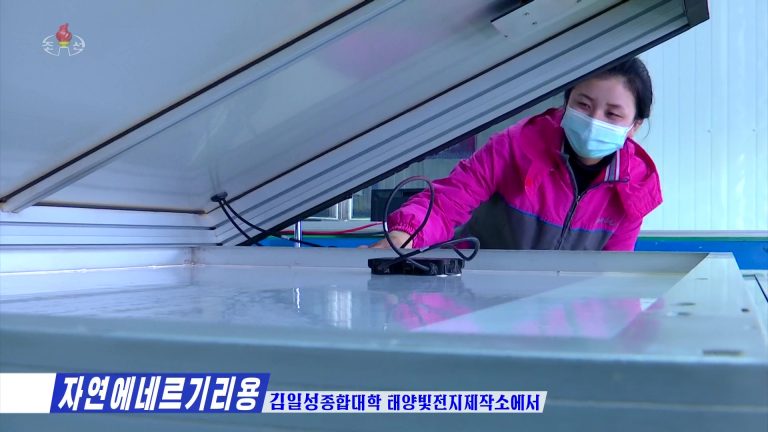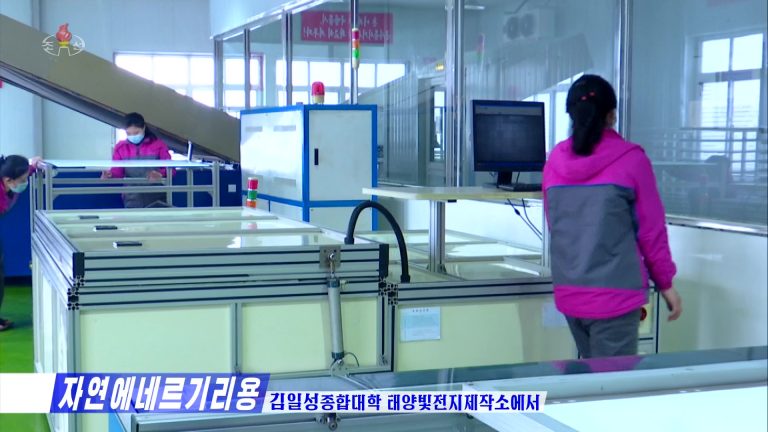North Korea’s Energy Sector: State Solar Electricity Research and Manufacturing
In this second installment of our series on North Korea’s energy sector, we will examine the evolution of solar energy in the state’s energy plans and policies. Hydropower still makes up the bulk of the country’s renewable energy generation, but solar has become increasingly important over the past decade. This rising priority is reflected in the state’s establishment of the legal basis for pursuing it, as well as the establishment of scientific research institutions and commercial capabilities. As a result, the use of solar energy is transitioning from spot solutions for individual homes and buildings to surplus electricity generation to feed into the national grid.
Introduction of Solar to North Korea’s Energy Mix
The Democratic People’s Republic of Korea (DPRK or North Korea) appears to have identified the benefits of harnessing renewable energy in the mid-2000s. From around that time, state media began reporting on developments of solar energy in other countries—a sign that work on the technology was already underway at home.[1]
In March 2009, Korean Central Television reported on what was probably one of the first uses of solar electricity in the country. The Central Tree Nursery had installed solar panels to help regulate the temperature and humidity in its greenhouses. The solar panels were seen in Rodong Sinmun in October 2011 as part of coverage of Kim Jong Il’s visit to the site.[2]
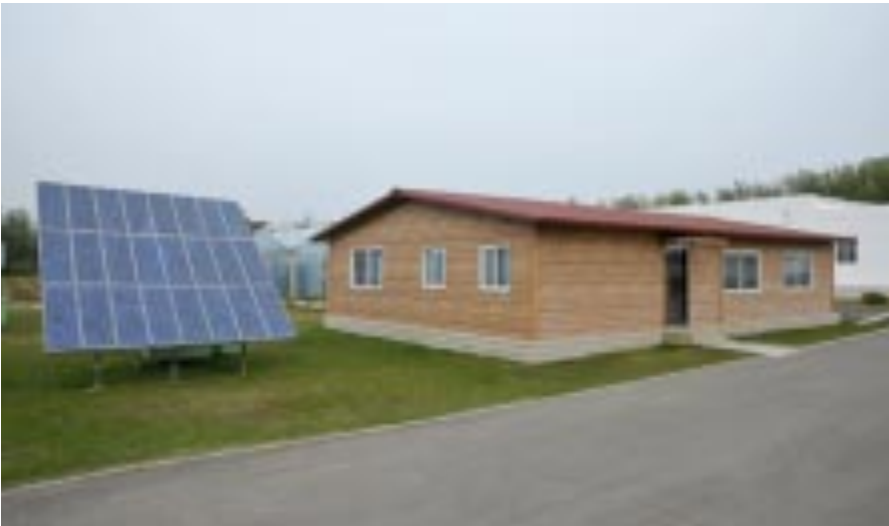
A day earlier, state media reported that Kim also visited the new solar equipment center in Pyongyang, which was manufacturing solar water heaters.
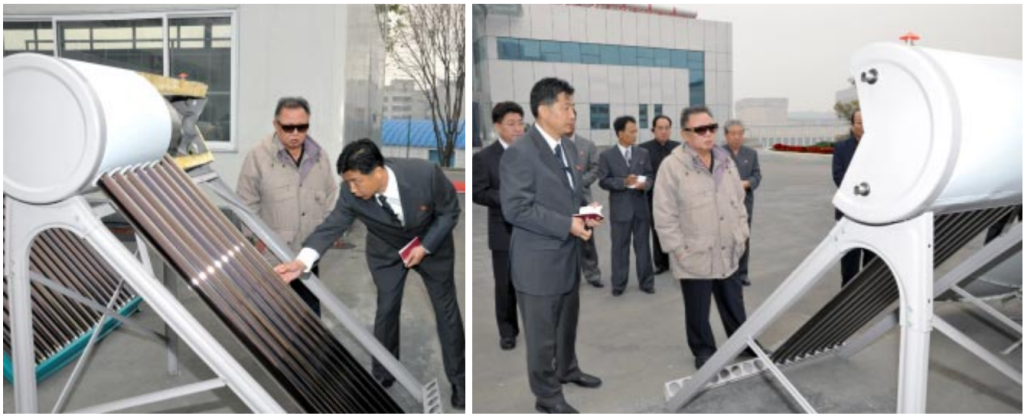
Such heaters are a simpler technology than solar electricity panels and use the sun’s energy to heat up water. While they are far from universal, they can be seen on some new construction buildings across North Korea.
Although these heaters are beyond the focus of this article, which deals with electricity generation, it is one way in which solar has been used to meet household needs despite the country’s chronic energy shortages.
Both of those visits came about two months after North Korea made several amendments to the Law on the Protection of Environment (환경보호법), including a call on institutions, organizations and enterprises to reduce consumption of fossil fuels and actively develop and use renewable energy including solar, geothermal, wind and tidal power.[3]
That amendment was eventually replaced with the Law on Renewable Energy, passed by the Supreme People’s Assembly in May 2013. The new legislation built on the previous amendment, calling on the state and scientific institutions to conduct a survey of renewable energy resources and encouraging their development and use.[4]
The legal changes were some of the most visible signs that the state was getting more serious about renewable energy, including solar energy. That said, as discussed in the first article in this series, the push for renewable energy development is much more likely to be motivated by the challenges of basic energy provision than actual environmental concerns.
Natural Energy Research Institute
Less than a year after the new law was enacted, the State Academy of Sciences created the Natural Energy Research Institute (자연에네르기연구소) in January 2014. The institute is located on the academy’s campus in Pyongsong, just north of Pyongyang.[5]
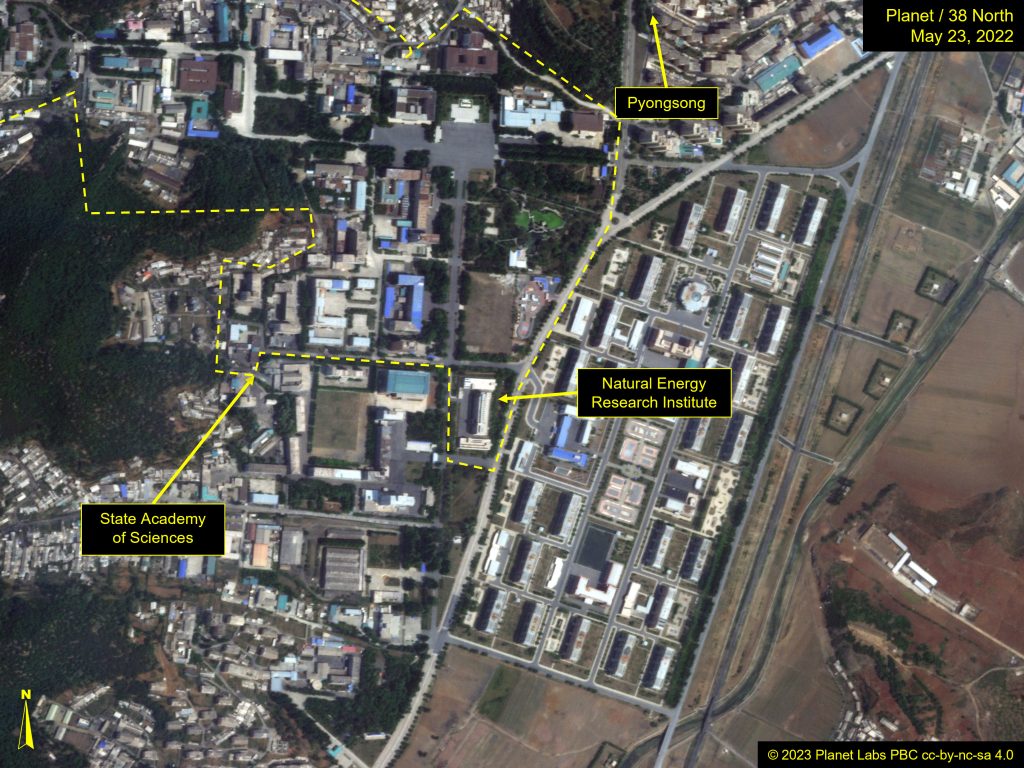
The institute likely grew out of the Natural Energy Development and Utilization Center (자연에네르기개발리용쎈터) at the State Academy of Sciences, which had been in existence since at least 2003.
The institute has been profiled by state media several times over the last nine years and is said to cover over 8,000 square meters and is engaged in research into geothermal, wind, biomass and solar energy.
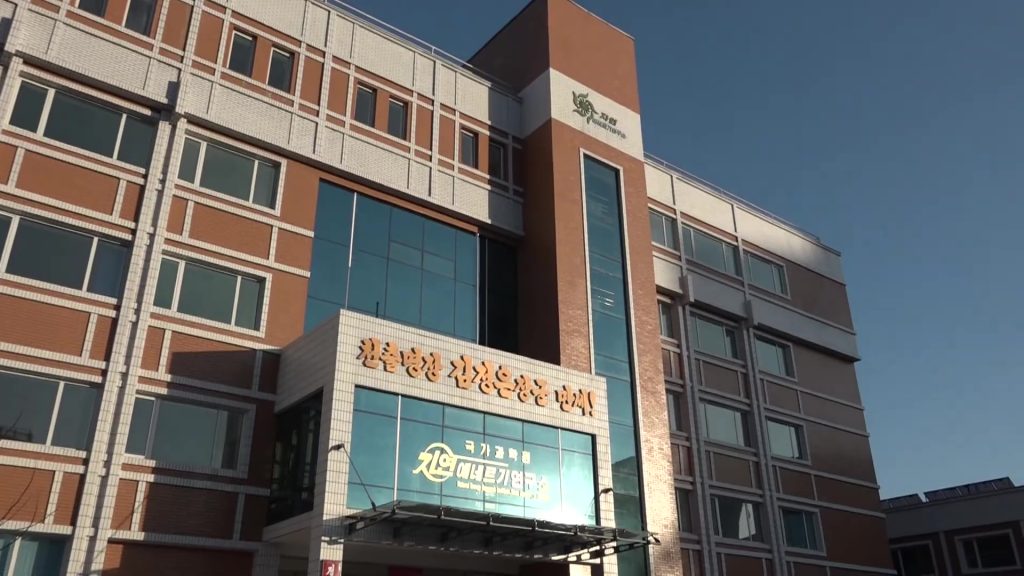
Among its units is the Solar Cell Application Laboratory, which, according to state media, is developing domestically produced solar cells. A profile of the lab in 2020 said it had developed a panel “capable of generating electricity of 1 000kW [kilowatts] annually.”[6]
The claim is difficult to evaluate, however, because of a lack of information on the panel in question.
In one 2016 report, state television showed images of engineers working on solar cells with what appeared to be soldering irons. The cells can be seen in plastic-wrapped packs on the work desk, which raises the possibility they were imported from an outside source rather than produced by the institute.
The individual cells need to be connected together to make a solar panel, and it is possible this lab is simply used for that assembly process, although no details were provided.
Kim Il Sung University Solar Lab
A year after the creation of the Natural Energy Institute, a solar lab was established on the campus of Kim Il Sung University in Pyongyang.
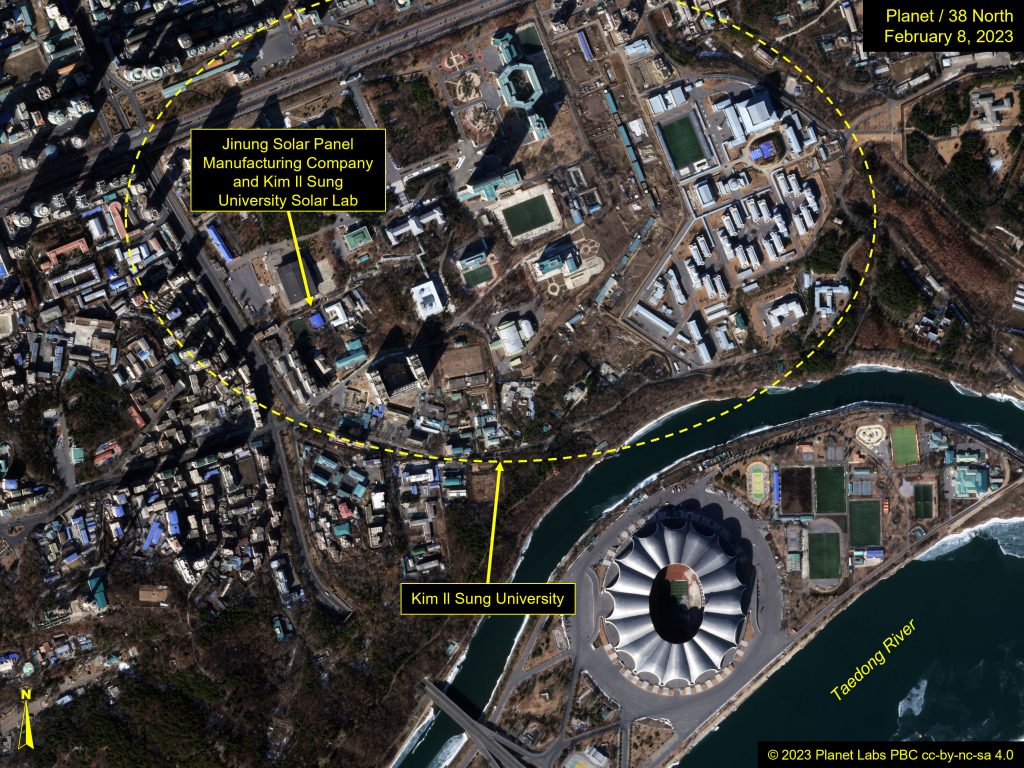
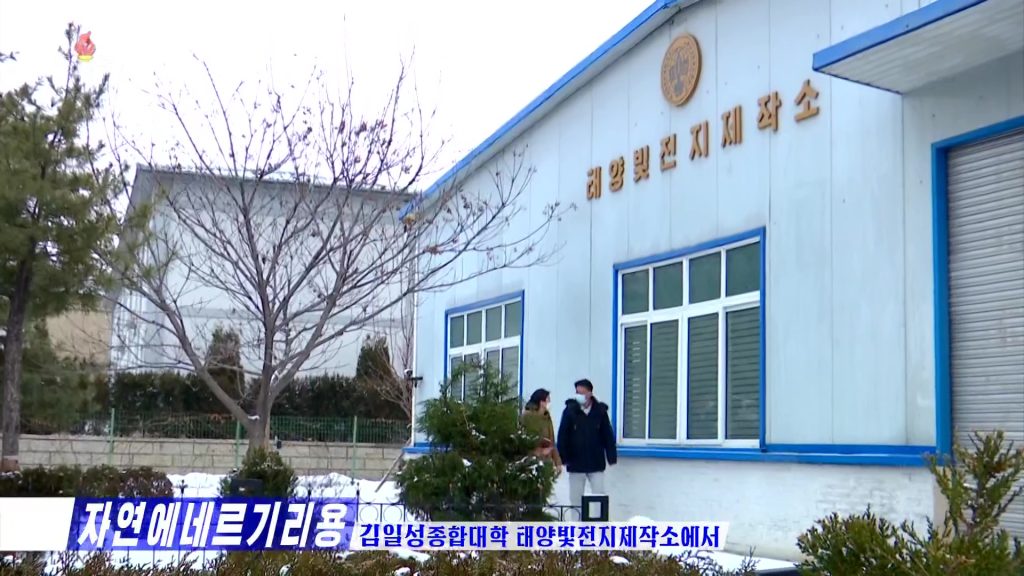
The Kim Il Sung University Solar Lab has been profiled by state television several times. In most reports, engineers are shown assembling solar panels from solar cells and testing the panels. As with the Natural Energy Institute, it is unclear from the images if the cells are also produced at the laboratory or imported from an external source.[7]
The lab has also developed several inverters, which allow solar power to be fed into the electricity grid.[8]

While early solar installations in the country appeared largely to serve only the power needs of the building on which they were installed, more recent state media coverage has talked about surplus solar energy being fed into the grid.[9]
Engineers involved in solar research and development are often rewarded by the state for their work. For example, in a 2017 profile of Kim Il Sung University researcher Jong Un Gi. The n magazine reported that Jong had been awarded a 110-square-meter apartment on the 48th floor of the 70-story residential building on Ryomyong Street in Pyongyang as a result of his work in solar energy.[10] (Perhaps the apartment also serves as an incentive to work harder because it is a long walk up to the 48th floor without reliable electricity.)
Jong’s new apartment follows a general national strategy of rewarding scientists for their work. Two entirely new districts have been created in and near Pyongyang to house scientists and their families involved in important national research projects.[11]
Jinung Solar Panel Manufacturing Company
The Jinung Solar Panel Manufacturing Company (지능태양빛전지제작소에서는 or Jinung Solar Panel Manufacturing Station) is affiliated with Kim Il Sung University and has taken research done at the university and turned it into products. It appears to be located in the same building as the university’s solar lab.
In this case, there is documentary evidence that the company is actually producing solar panels of various sizes, including 100-, 150-, 200-, 250- and 300-watt designs, according to state media. A profile of the company in North Korea’s Foreign Trade magazine in 2016 says the panels have an efficiency of between 17.5 and 18.5 percent and are rated to last for 25 years.[12]
While the best commercially available solar panels can reach an efficiency of 20-23 percent, they are more expensive to produce. Even today, panels with a 15-20 percent efficiency are the most common in commercial use around the world and would have been even more common seven years ago when the profile was written.
To accompany the panels, the company also produces inverters in sizes from 1 to 10 kW for households and 10-500 kW for institutional and industrial use, according to state media. These sizes are consistent with solar installations in industrialized economies.
According to the 2016 profile, the company “is equipped with advanced facilities needed for the production of the cell chip inspector, laser chip cutter, laminating facilities, layer pressure, frame assembling machine, EL inspector, sunlight simulator and others.”[13] Subsequent images from the factory appear to show several of those machines in use.

Mokran Kwangmyong Company
The Mokran Kwangmyong Company in Pyongyang is probably best known for its audiovisual production work. Established in 1992, the company’s “Mokran Video” logo is common on many North Korean DVDs, and today solar panel production lines sit alongside those for DVDs.
It is credited with producing thin-film and crystalline solar cells, and in a profile of the company published in 2018, a photograph shows what appears to be an automated line for production of solar cells.[14]
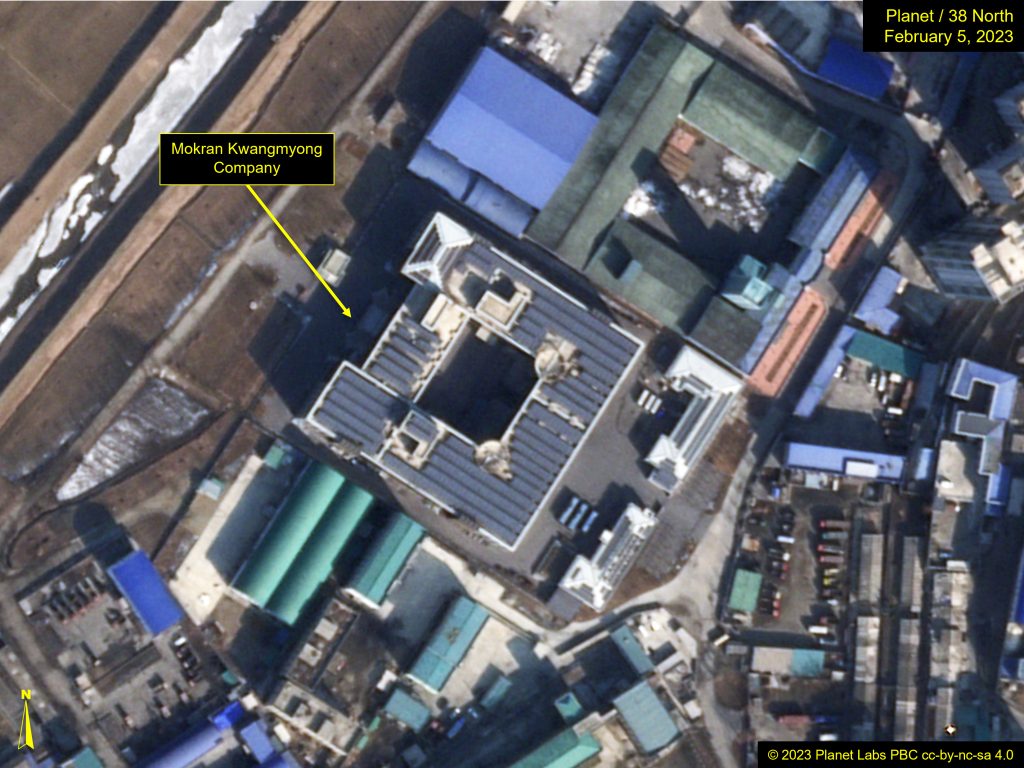
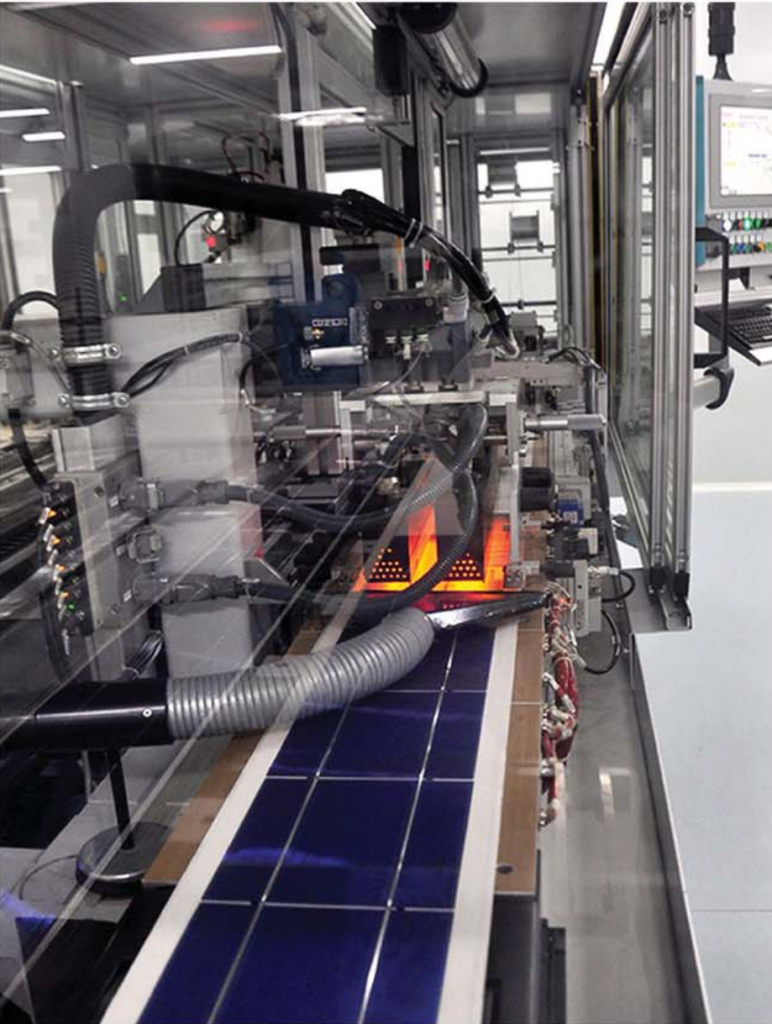
The company is one of the main solar panel production houses in the DPRK, and in 2020, state media said its panels had already been installed across its own building. They are visible in satellite images of the building in Pyongyang: “The Mokran Kwangmyong Company installed over 7 000 thin-film solar panels to the walls of its buildings covering thousands of square metres and more than 1 000 polycrystal solar panels on the roof.”
Up Next
In the next installment of this series, we will look at some of the country’s major solar energy generation projects and stations.
- [1]
Author’s archive.
- [2]
“위대한 령도자 김정일동지께서 중앙양묘장을 현지지도하시였다,” Rodong Sinmun, October 10, 2011.
- [3]
See “DPRK’s Environmental Law Supplemented with New Articles,” Korean Central News Agency, August 18, 2011, https://kcnawatch.org/newstream/1451890857-411026926/dprks-environmental-law-supplemented-with-new-articles/; and 北韓法令集. 下 (The Compilation of North Korean Laws: vol. 2), ed. 國家情報院 (National Intelligence Service) (in Korean) (Seoul: National Intelligence Service, 2020), 273.
- [4]
See 北韓法令集 上 (The Compilation of North Korean Laws: vol. 1), ed. 國家情報院 (National Intelligence Service) (in Korean) (Seoul: National Intelligence Service, 2020), 718; and “Law on Renewable Energy Enacted in DPRK,” Korean Central News Agency, September 2, 2013, https://kcnawatch.org/newstream/1451895628-54636834/law-on-renewable-energy-enacted-in-dprk/.
- [5]
See “Natural Energy Institute Established in DPRK,” Korean Central News Agency, November 4, 2014, https://kcnawatch.org/newstream/1546458590-719666936/natural-energy-institute-established-in-dprk/; and Elufa, “국가과학원 자연에네르기연구소에서,” YouTube, March 6, 2018, https://www.youtube.com/watch?v=Z_WYUir4J9Q.
- [6]
“Active Development of Renewable Energy,” Korea Today, (February 2020): 22.
- [7]
“보도,” Korean Central Television, 1130 UTC, January 11, 2018.
- [8]
“보도,” Korean Central Television, 2000 KST, January 28, 2019.
- [9]
See “Electricity Production by Solar Energy Propelled in Pyongyang,” Korean Central News Agency, February 22, 2023, https://kcnawatch.org/newstream/1677047938-87549414/electricity-production-by-solar-energy-propelled-in-pyongyang/; and “Solar Energy Widely Used in DPRK,” Korean Central News Agency, October 21, 2021, https://kcnawatch.org/newstream/1634811345-959034218/solar-energy-widely-used-in-dprk/.
- [10]
“Keep Your Feet Firmly Planted on this Land and Look Out Over the World,” Korea Today, (August 2017): 7.
- [11]
See “Kim Jong Un Gives Field Guidance to Newly Built Wisong Scientists Residential District,” Korean Central News Agency, October 14, 2014, https://kcnawatch.org/newstream/1546459922-927772367/kim-jong-un-gives-field-guidance-to-newly-built-wisong-scientists-residential-district/; and “Kim Jong Un Visits Apartment Houses for Scientists of Kim Il Sung Univ.,” Korean Central News Agency, August 13, 2013, https://kcnawatch.org/newstream/1451895965-114476735/kim-jong-un-visits-apartment-houses-for-scientists-of-kim-il-sung-univ/.
- [12]
“Jinung Solar Panel Manufacturing Station,” Foreign Trade, no. 3 (2016): 8.
- [13]
Ibid.
- [14]
See “Mokran Kwangmyong Company,” Korean Central News Agency, August 8, 2019, https://kcnawatch.org/newstream/1565332214-995672515/mokran-kwangmyong-company/; and “Technology intensive company,” DPR Korea (December 2018): 32.

